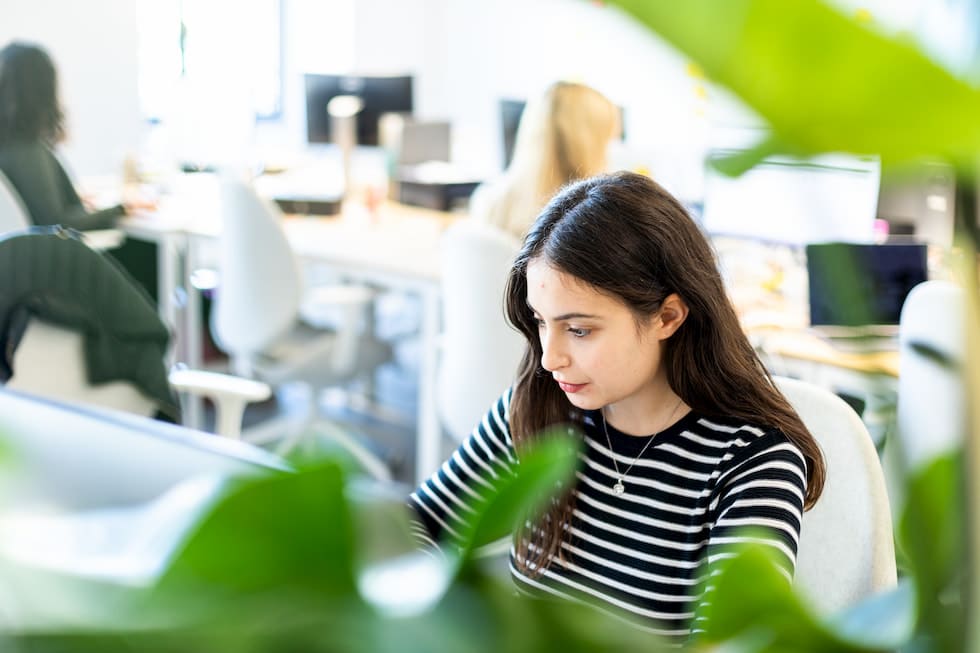
Turn data into strategic insights.
Enable proactive decision-making with People Analytics.
Create reports in seconds29. September 2020
How Can You Tell If an Employee Is Going to Quit?

Employee turnover is one of HR’s biggest headaches. It can drain a company’s budget, as well as their time, all while hurting productivity. The most startling point is that, according to Deloitte’s Global Millennial Survey 2020, over 30% of younger workers plan to leave their jobs within two years.
But, there are concrete ways to mitigate attrition (click here to read more about attrition rates in general). So, we turned to an expert to learn more about the signs an employee is about to quit — and what you can do about it.
Patrick Cournoyer, Chief Evangelist at Peakon, says companies can predict ‘flight risks’ as early as nine months before they happen. How? By relying on data. Laura Schroeder, our Head of Brand and Comms, recently sat down with Patrick to learn more about the warning signs that your best employee is going to quit. This way, you can take action before it’s too late.
Check out the whole interview right here:

We need your consent to load this service!
This content is not permitted to load due to trackers that are not disclosed to the visitor.
The Four Predictors You Should Not Ignore
According to Patrick, there are four predictors that indicate employees are thinking of leaving an organization. These attributes can inform your strategy for how to keep employees from quitting and to decrease employee turnover:
1. Recommendation Scores Sink
If your HR team routinely measures how likely team members would recommend your company as a place to work, and those scores drop – watch out.
Patrick points out that people who answer on the lower end of this scale are three times more likely to leave. But, for that to work, you also need to be keeping an eye on this metric in general. When you do, it can help foresee any issues, get a general sense of life at your organization, and key areas for improvement before they become real problems.
2. Loyalty Drops
How willing is an employee to leave if she or he were offered another role at another company? Patrick warns that many organizations don’t even know. It’s a crucial engagement metric, though, and research shows loyalty is decreasing.
In a 2019 international study of 25,000 employees, 43% of them said they would leave for a mere 10% pay raise in another company — up from 25% the year before. When employees feel less tied to your company, employee turnover skyrockets because even the smallest increases in pay or work-life balance can find an employee out the door in mere moments.
Enable Data-Led Decisions

Collect and organise important HR insights such as absences, attrition, and more. Generate detailed reports in seconds so you can strategise with confidence.
Unlock detailed HR analytics3. The Ability to "Be Heard” Slows Down
How we work was already transforming before the Covid-19 pandemic hit. But now, that change has accelerated. “Employee experience, and employee expectations, and employees being the center of businesses has leaped forward significantly over the past six months,” Patrick stresses.
This means that their voices, feelings, and opinions are more important than ever. If organizations are wondering how to keep employees from quitting, they need to understand that employees care about being heard and being able to assert their views within their companies.
Therefore, employee turnover can be helped when employees are actively listened to, and when they feel as though they are being listened to, as well.
4. Growth Potential Stagnates
A clear sign of flight risk is when employees believe their growth opportunities and the ability to participate in building growth are not there, Patrick says.
Essentially, when employees feel they have done all the growing they can do in a role, they leave. That’s why it is important that employees receive a clear, actionable roadmap to grow their careers to reduce employee turnover overall.
Checklist: Ensure a seamless offboarding

Don't let departures damage your reputation, and ensure smoother employee exits with our structured offboarding checklist. Download it today.
Download The Checklist NowTwo Key Ways To Reduce Employee Turnover
Is there a way to change an employee’s decision to move on? Yes, if you focus on the right things. Patrick claims that, first and foremost, companies should concentrate on two areas that will have the biggest impact on preventing employee turnover:
1. Structured growth plans
The days of top-down growth plans are gone.
Employees want to feel that they are part of their growth trajectory. At the same time, the pace of change in businesses is getting faster. These trends together mean that development plans need to be crafted collaboratively and that conversations around them need to happen more frequently.
Patrick recommends that each employee have a structured growth plan (and a central role in building that plan). Then, managers should be empowered to have monthly check-ins with their direct report to revisit the plan. “If [employees] feel that their growth is a priority not only for the organization but specifically for their direct manager, then that is what’s going to encourage them to continue to stay and invest in the organization.”
Enable Data-Led Decisions

Collect and organise important HR insights such as absences, attrition, and more. Generate detailed reports in seconds so you can strategise with confidence.
Unlock detailed HR analytics2. Empowering Employee Voices
With fragmented workforces and team members working from home over the past few months, many organizations have stepped up the ways they are empowering voices of their employees.
This can be done by, for instance, encouraging team members to voice concerns and share stories through multiple channels, enabling them to ask questions and get feedback on high-level decisions at the business, or making it easy for them to share company news on social media (corporate culture is essential, click here to learn more about the cultural web model).
Patrick explains that the ability for employees to be listened to empowers them to feel more connected with the organization and hopefully stay for a longer time.
HR Template: Hosting a Great Exit Interview

Employees leaving is a fact of life. Gain insights from staff departures by hosting productive exit interviews — try our exit interview template for a helpful leg up today.
Download our template hereEmployee Turnover Starts By Diving Into Data
Sometimes the signs an employee is about to quit are obvious, but often they are not. With the power of data insights and proactive approaches, you can stem flight risks, slow down turnover, and save your whole organization a wealth of resources.
